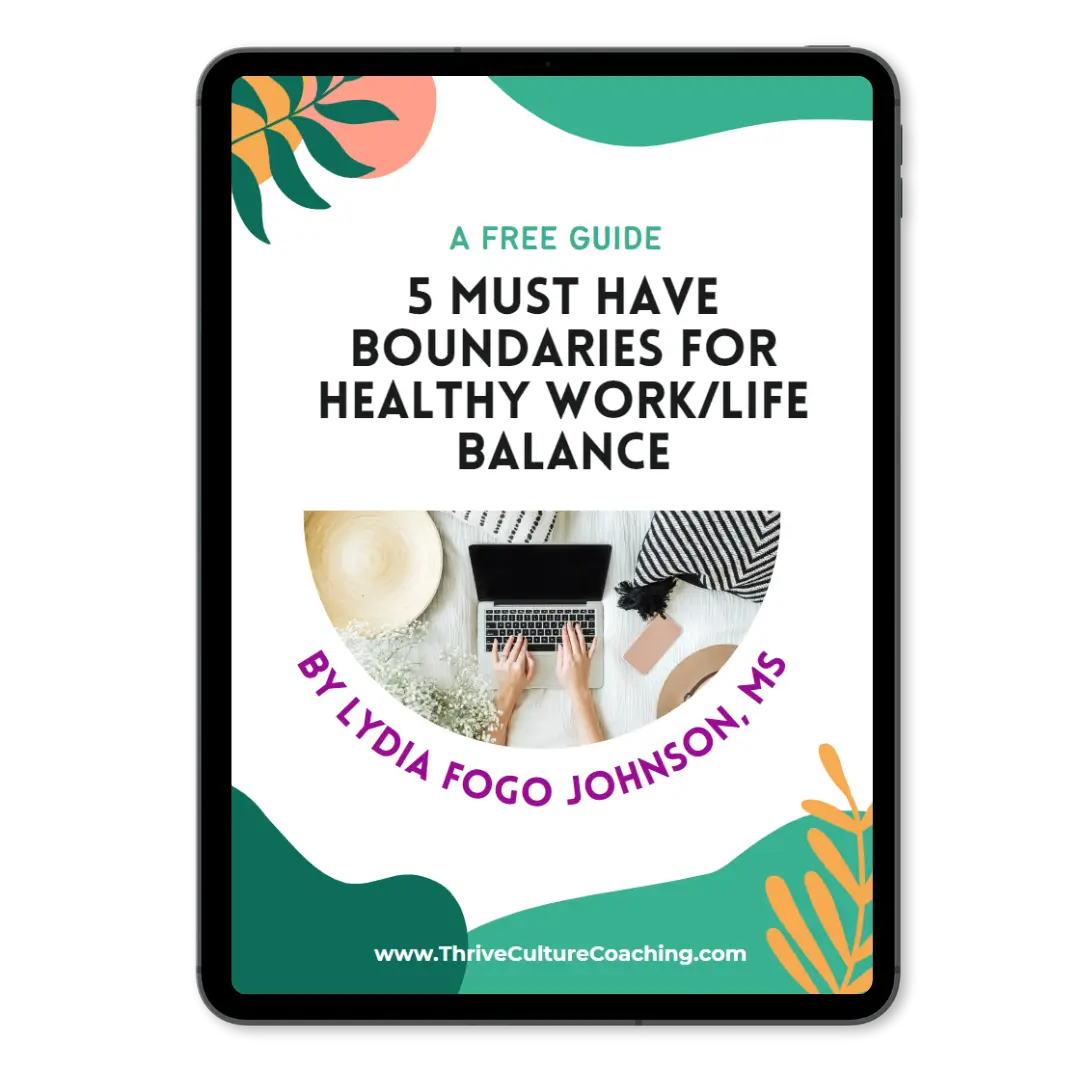Table of Contents
Introduction
You know that simmering mom rage you feel when you’re the only one who remembers to buy dog food, schedule the pediatrician, replace the hand soap, and somehow also run a team meeting with a smile? Yeah. There’s a name for that: that’s the invisible load.

And if you’re like so many of the women I work with — successful, smart, and juggling careers, kids, and everything in between— that invisible load isn’t just annoying. It’s exhausting. It’s what keeps you up at night, wakes you up early, and chips away at your sense of peace, partnership, and personal time.
Even the most well-meaning, split-everything-down-the-middle couples can fall into these patterns — especially when kids come into the picture. And honestly, who can blame them? Most of us didn’t grow up with good examples of what an equal, collaborative partnership at home looks like — we’re just out here winging it.
That’s the very gap Fair Play by Eve Rodsky was designed to fill. It gives couples a language, a structure, and a path toward truly sharing the work — not just the chores, but the mental weight behind them.
In this post, I’ll share what the Fair Play system is, why it matters (especially for ambitious working moms), and how you can start using it to redistribute the hidden work in your household — in a way that supports everyone’s health and happiness.
What Is the Fair Play System — and Why Does It Matter?
Fair Play is a system designed by Eve Rodsky to help families make the invisible work of home and caregiving visible — and redistribute it with fairness and intention. At its core, it’s about creating a shared understanding of what it really takes to run a household and raising the bar for what equality at home should look like.
This matters because without intervention, most couples — even progressive ones — tend to default to deeply unbalanced dynamics. This isn’t an opinion; it’s a fact. According to research, women still take on 60% more unpaid domestic labor than men.
And when you tally up all those “little things” like remembering to book the dentist, buy the birthday present, or clean out the fridge? It adds up to the equivalent of 16.25 extra 24-hour days per year of unpaid labor for mothers compared to fathers! That’s according to the American Time Use Survey.
This imbalance isn’t always caused by men’s laziness or bad intentions. Even in couples who believe in equality, the division of labor often becomes lopsided, especially after kids.
Part of the problem is cultural: we’ve inherited generations of toxic gender norms and deeply embedded beliefs about whose time is more valuable. We’ve also built careers and companies around the assumption that someone else is doing the domestic work — and [spoiler alert] that “someone” is usually a woman.
But here’s the good news: this doesn’t have to be your forever.
Fair Play gives couples a framework and language to name what’s happening, redistribute responsibilities fairly, and build a more sustainable, satisfying partnership — one that doesn’t leave one person drowning while the other thinks they’re helping “just fine.”
How Fair Play Works
At first glance, Fair Play might sound like just another chore chart — but it’s so much more than that. It’s a system designed not only to divide labor, but also to dismantle the invisible load that so many women carry silently.
Fair Play uses a deck of 100 cards, each representing a specific household or caregiving task — things like “laundry,” “morning routine,” “school forms,” or “holiday planning.” These cards make the work tangible. Suddenly, the unspoken and unnoticed effort it takes to run a home is laid out on the table — literally!
But the real power of Fair Play isn’t in the cards — it’s in what they represent.
When you hold a card, you’re not just doing the task. You take full ownership of it from start to finish — a concept called CPE: Conception, Planning, and Execution.
Let’s break that down:
- Conception is the mental energy it takes to realize the task needs doing. (The milk is low. The dentist appointment is due. Your kid’s lunch box mold situation has officially escalated.)
- Planning involves figuring out the logistics. (When are we free? Who needs to be looped in? Do we need supplies?)
- Execution is the final act of actually doing the thing. (Shopping, scheduling, showing up.)
In most households, one partner might “help” with execution, but conception and planning are still stuck on one person’s plate. Fair Play challenges that model. When you “hold the card,” you own all three steps — which relieves your partner from carrying the mental load and gives you a chance to truly offload a task.

The system also includes two powerful principles:
- Minimum Standard of Care (MSC): What does “good enough” look like for each task? You define this together to avoid weaponized incompetence and endless micromanaging.
- The Re-deal: Just because you’re holding a card today doesn’t mean you’re stuck with it forever. Cards can be re-dealt frequently based on bandwidth, life changes, or big stressors (like newborns, job transitions, or burnout).
Fair Play is a living, breathing system — not a one-and-done fix. It’s a tool for ongoing dialogue, shared responsibility, and real partnership.
My Experience with Fair Play (And Why I Became Certified)
I didn’t come to Fair Play with a coaching hat on. I came to it as a woman teetering on the edge of burnout.
At the time, I was working a demanding HR consulting job, running a real estate company, teaching both community yoga and acroyoga classes, and trying to hold down the fort at home. My husband was also working full-time and co-teaching yoga with me.
But despite our best efforts to divide things fairly, I increasingly found myself holding the bag on all the “neutral” tasks. The mundane, default functions of running a home: feeding the dog, sorting the mail, washing the hand towels. Nothing glamorous, but all necessary.
At first, I told myself I was just more organized — more proactive. But over time, I began to feel like the project manager AND the person doing the projects. As the tasks piled up, so did my frustration. Eventually, burnout and resentment started knocking.
I knew those simmering feelings weren’t sustainable for my health, happiness, or marriage. So, like any good high-achiever, I turned to Google in search of a real solution — something long-term and systemic.
That’s when I found Fair Play.
What I loved — and what made me and my husband stick with it — was that it wasn’t about blame. It wasn’t about nagging or finding a better way to delegate. It was about realigning on what it takes to sustain a home and a family, AND building a structure to support that care with equity and clarity.
Fair Play gave us a shared language and a practical system. Just having the words to ask, “Who’s going to quarterback this card?” was a game-changer. We could lay everything out, look at it together, and make conscious, respectful decisions about how to divide the work. It helped us get back on the same team.
And then… our son was born.
With a newborn at home, everything changed again. Suddenly, it felt like we had 40 new cards on the table (literally! Nearly half the deck is related to parenting). But instead of defaulting back into old roles, Fair Play helped us reorient with more clarity, intention, and teamwork.
That experience was so transformative for us that I became Fair Play certified. And when I did, I started noticing the exact same dynamics in my clients’ lives.
The women I coach are leaders. They’re managing teams, driving results, and showing up big in their careers. But they’re also managing the birthday parties, packing the lunches, and keeping track of the daycare updates — and it’s… just too much.
I realized I couldn’t help my clients reduce burnout at work if I ignored the invisible load they were carrying at home. Fair Play became a tool I could offer when that part of the puzzle needed attention. I don’t use it with every client, but when the weight at home is part of the stress equation — and it often is — it gives us a powerful way to lighten the load.
Not overnight. Not perfectly. But meaningfully — starting right where they live.
How to Start Using Fair Play in Your Own Home

If you’re starting to realize that the balance at home isn’t working — or that your burnout isn’t just about your job — it might be time to try the Fair Play way. The system is flexible, accessible, and can be as simple or as detailed as you need it to be.
Here’s how to start:
1. Acknowledge the Imbalance Without Blame
The first step is recognizing that an invisible load exists — and likely isn’t evenly shared. That recognition alone can diffuse tension and open up space for real, respectful conversation.
Try opening with something like:
“I’ve been thinking about how we divide things at home, and I’d love to revisit what feels sustainable and fair for both of us.”
Keep the tone warm and non-confrontational. Remember, you’re setting the stage for an honest, respectful conversation — not drawing battle lines.
2. Learn the System Together
Next up is to learn the system (together!): Read the book, watch the documentary, or browse the cards online.
Better yet, work with a certified Fair Play facilitator (like me!).
Sometimes it’s easier — and more productive — to have a neutral third party hold the space, especially when emotions or old patterns get in the way. A facilitator can help you understand the process, define your shared values, and come up with a system that fits the unique needs of your household.
3. Make the Invisible Visible
There are several ways to do this: You can use the physical deck, print the cards, or just brainstorm a list of tasks that need managing in your home. You choose.
The key is to name the work — all of it!
Then ask: Who’s holding each card right now? Who owns the mental, emotional, and logistical pieces of each task?
You may find that some cards aren’t being picked up. Others may be sitting in a fuzzy “we both do it” zone (which usually means one person actually does it all). This step is eye-opening.
4. Redefine What’s “Fair” — Not What’s “Even”
Fair doesn’t mean 50/50. It means sustainable. It means mutually agreed-upon. Your goal is to divide the load in a way that feels right — one that reflects your current reality.
Start small. Shift just one or two of the most draining cards off your plate and see how that feels. Make sure both of you are holding a few of the “Happiness Trio” cards — like Unicorn Space, Self-Care, or Adult Friendships. Everyone deserves those!
5. Keep the Conversation Going
Fair Play isn’t a one-time deal. Life shifts, workloads change, and stress ebbs and flows. The system works best when you schedule regular check-ins — weekly or bi-weekly — to reassess, re-deal, and reconnect. Couples come up with all kinds of creative ways to manage their system, like Trello, sticky notes, or even an Excel sheet!
And yes, even the conversation about how you’ll keep having conversations… that’s a card, too!
The Takeaway

Fair Play isn’t about perfectly dividing the chores or holding your partner to a checklist. It’s about making the invisible load of running a home visible — and creating a more balanced, considerate way to share it. It’s a system rooted in equity, clarity, and sustainability, designed to support both your relationship and your well-being.
But even with a well-structured, well-intentioned system like this, putting it into practice can still be challenging.
Emotions can get in the way, and it’s not uncommon for people to get defensive when long-held beliefs about gender roles are challenged. On top of that, just understanding the system can feel like a lot when you’re already carrying so much.
The good news? This doesn’t have to be a DIY project. I’m here to help.
This is the work I do: helping women reclaim time, energy, and clarity — not just in their careers, but in the rest of their lives, too. Because you only get one wild and precious life. And you shouldn’t have to spend it doing 100 thankless tasks you never signed up for.
If you’re a working mom or a woman in leadership feeling stretched too thin, let’s talk. Book a free consultation and we’ll explore how Fair Play can help you create more balance at home — without sacrificing your sanity or your ambition.




Share